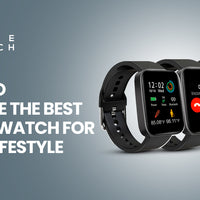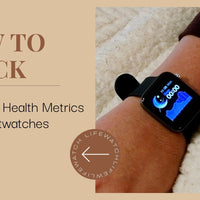Summary:
- Battery life varies depending on usage patterns, display type, and background features. Most smartwatches last 1–3 days, but models like Life Watch can extend up to 7 days.
- Features like GPS, heart rate monitoring, and always-on displays drain battery quickly; adjusting settings and enabling power-saving modes can help extend usage.
- Over time, lithium-ion batteries naturally degrade, reducing capacity. Careful charging habits can slow this process.
- Display technology affects power consumption. AMOLED screens are more power-hungry, while transflective displays conserve battery.
- Life Watch, with its 250mAh lithium-ion battery, offers up to 168 hours of continuous use, making it a strong choice for those needing long-lasting performance.
Battery life is one of the most important and often overlooked factors when choosing a smartwatch. From fitness tracking to constant notifications, today’s smartwatches are packed with features that demand power. But how long do they actually last on a single charge?
The answer depends on several things, including how you use your watch, the type of screen it has, and what features are running in the background. Most smartwatches last between one to three days on average, but some models, like Life Watch, can offer extended battery performance of up to seven days.
In this blog, we’ll explore what influences smartwatch battery life, how to get the most out of your device, and why battery performance should be a top priority when making your decision.
Factors That Affect Smartwatch Battery Life
Battery life isn’t the same for everyone, even if you’re using the same watch. That’s because how you use your smartwatch can drastically affect how quickly the battery drains.
1. Usage Patterns
The more features you use, the faster the battery depletes. Activities like GPS tracking, workout logging, continuous heart rate monitoring, and using an always-on display all require significant power. If your watch is constantly syncing data or showing notifications, you’ll likely find yourself charging more often.
2. Battery Degradation
Smartwatches rely on lithium-ion batteries, which naturally degrade over time. After one to two years of regular use, the battery’s capacity can decline, requiring more frequent charging. Taking care of your battery early on can help slow down this degradation process.
3. Software and Features
Background processes like app syncing, voice assistants, or automatic updates can shorten battery life. Some watches are more efficient at managing these processes than others, depending on the software and hardware optimization.
4. Display Type
Display technology also plays a role. AMOLED screens deliver vivid colors and sharp contrasts, but they tend to consume more power, especially in bright environments or with always-on settings enabled. Transflective displays, while less vibrant, are much more battery-friendly.
Tips to Extend Smartwatch Battery Life
Even if your watch has a modest battery size, a few small tweaks can go a long way in improving day-to-day performance.
Optimize Settings
Adjust your screen brightness to a lower level and turn off the always-on display if it’s not essential. Limiting notifications to only the most important apps also helps reduce background activity.
Use Power-Saving Modes
Many smartwatches include built-in battery-saving modes. These features reduce functionality, such as disabling sensors or dimming the screen, during periods of low activity or at night.
Manage Features
Only activate features like GPS or heart rate tracking when needed. Leaving them running in the background drains power quickly, even if you're not actively using them.
Fast Charging Support
Some models come with fast-charging capabilities, allowing you to top off your battery in just a few minutes. If you’re often short on time, this feature can make a big difference in your daily routine.
Life Watch Battery Capacity
Life Watch is engineered with endurance in mind. Powered by a 250mAh lithium-ion battery (3.7V), it’s designed to deliver extended performance, up to 168 hours of continuous use.
This makes Life Watch an ideal option for users who prioritize convenience and reliability. Whether you’re tracking sleep, monitoring fitness goals, or simply staying connected throughout the day, you can trust it to last without frequent charging interruptions.
Key Takeaways
Smartwatch battery life varies significantly depending on your habits, the technology inside your device, and the features you use most. While many smartwatches require daily charging, there are options, like Life Watch, that offer long-lasting power with minimal upkeep.
If battery life is a key consideration in your purchase decision, be sure to evaluate your personal usage patterns and prioritize models built for endurance. Small adjustments like lowering screen brightness or enabling power-saving modes can also help stretch each charge further.
Choosing a smartwatch isn’t just about features; it’s about how well it fits into your everyday life. And when your schedule doesn’t leave time for daily charging, a smartwatch with extended battery life becomes more than just a convenience. It becomes essential.
Looking for a reliable smartwatch with long battery life? Try Life Watch and experience up to 168 hours of uninterrupted performance.














